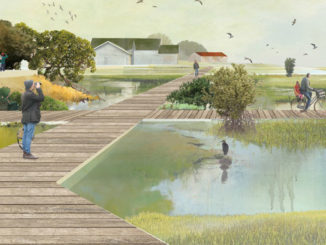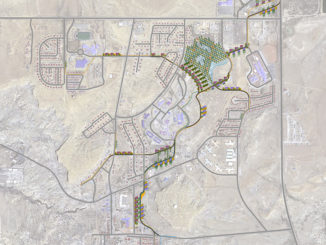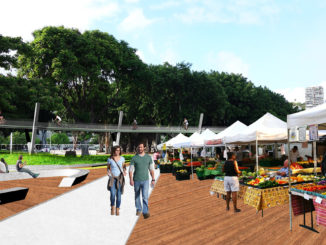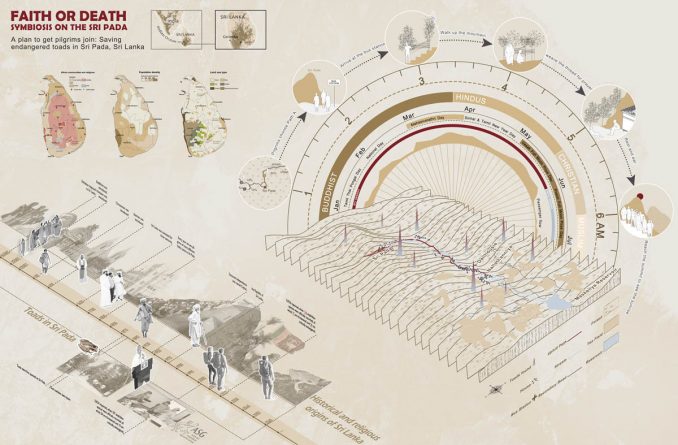
Sacred to Buddhists, Hindus, Muslims, and Christians, Sri Pada in South Central Sri Lanka is championed by its footprints like mountain-top boulders and towering elevations. The mountain is under intense environmental pressure as thousands of pilgrim flock to the site. The continuous pilgrimages over the years are causing serious damages to the ecosystem of the Sacred Foot Mountain, putting the amphibian toad at risk. There are two main reasons why toads are endangered: one is the influx of pilgrims into Sri Pada, which affects the mating grounds. The other is the destruction of the sacred mountain’s ecosystem where its waterways are so polluted that it is difficult for toads to breed.
The pilgrimage satisfies people’s spiritual faith and satisfaction, but the threat to the ecology of Sri Pada, is a deviation from the original intention of religion. What are the strengths of landscape architects in the face of such massive and spontaneous pilgrimages to Sri Pada and other holy sites around the world?
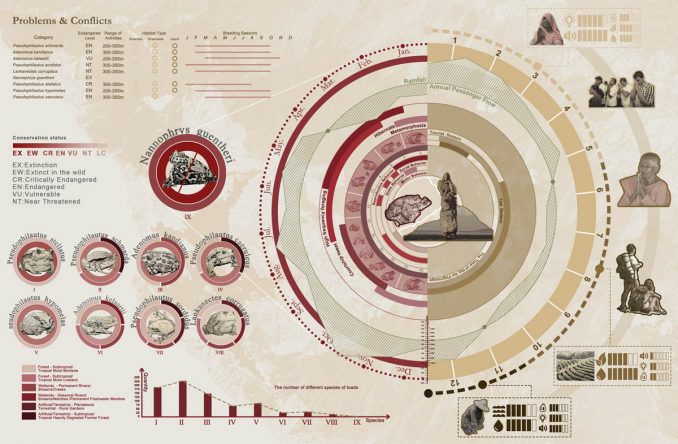
During the pilgrimage up the mountain, many pilgrims carry needles and thread with them and weave a net of white thread among the trees to express their pure and good wishes. If the pilgrims can be brought into life-saving activities, not only to protect the environment of Sri Pada but also to allow religion to play its origional role of compassion for all things.
Each religion has a common belief–Do Not Kill. Our main plan was to weave two “threads” together, one “thread” to guide the pilgrim and one ” thread ” to design the restoration of the Toad’s habitat.
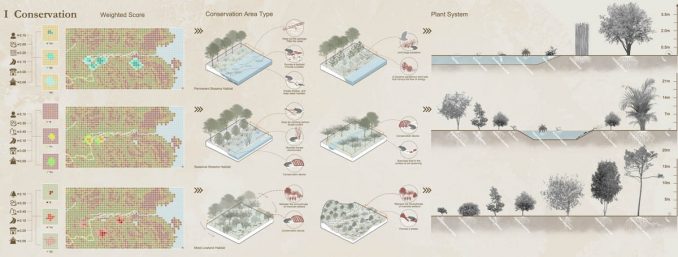
For the design of the habitat, the basic conditions for the survival of the toad, such as the hydrological environment, vegetation structure, canopy closure and so on, were sorted out and integrated into GIS for decision-maker, three types of toad habitat, Permanent Streams, Seasonal Streams, and Moist Lowland, are set up to create different types of wetlands with microclimate habitat for toads.
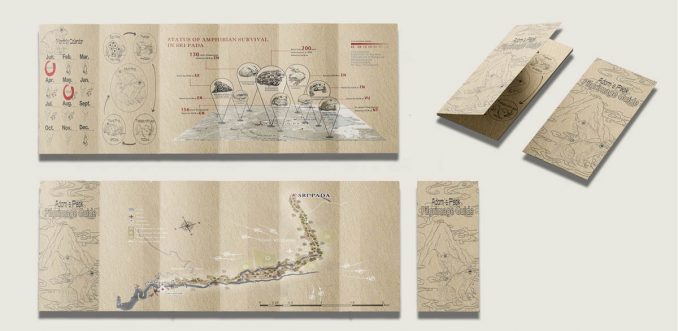
As for guiding the behavior of pilgrims, the plan has produced a “Pilgrim Handbook” to convey the endangered status of Sri Pada’s toad to pilgrims in an easy-to-understand form. The handbook is easy to carry and recycle as a tourist guide, included a pilgrimage calendar, which combines climate, toad activity cycles, and religious holidays to mark the proper month for the pilgrimage. It also contains a map to the mountains, in which we noted the location of the designed toad habitat, the range of activity and breeding requirements of the Toads, and added information on the habits of the Toads, that pilgrims should try to avoid.
Throughout the project, the landscape architect acted as a tailor, both for the rational optimization of the Toad’s habitat in Sri Pada and for the active involvement of pilgrims in the project. Our 1 + 1 model aims to make religious practices more compatible with conservation and to help pilgrims better communicate with Sri Pada by combining our expertise and analytical skills.
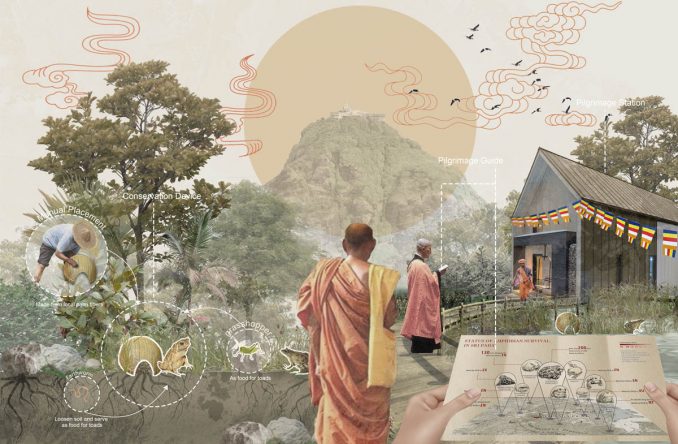
Student Project | Symbiosis on the Sri Pada | Kexin Zhang & Tianchen Zhang & Lu Xie & Zhizhi Wang
Project Name: Symbiosis on the Sri Pada
Student Names: Kexin Zhang, Tianchen Zhang, Lu Xie, Zhizhi Wang
Schools: Soochow University, Nanjing Forestry University, Hengyang Normal University
Advisors: Mengqing Yu, Chaoqun Lin, Xin Li

